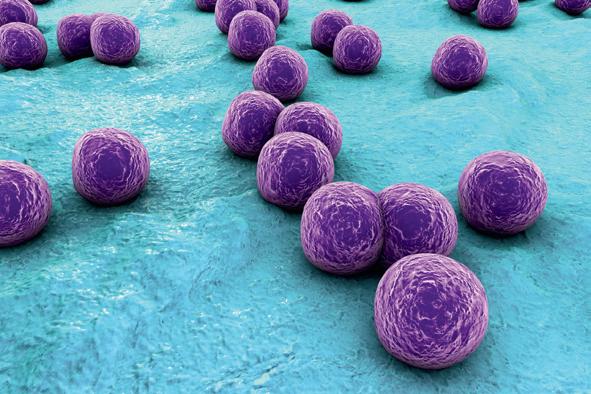
3 minute read
MOVERS&SHAKERS (news)
Queensland invests in global mRNA vaccine hub
Sanofi, one of the world’s largest vaccine innovators, has partnered with the Queensland Government, The University of Queensland (UQ) and Griffith University to inject $280 million into a next-generation mRNA vaccine research hub based in Brisbane. Sanofi operates 20 research and development sites around the world exploring new medicines and vaccines through translational science, where researchers work to translate early observations in the laboratory into clinical results that directly benefit people.
The Translational Science Hub will link world-class researchers in Queensland with scientists at the Sanofi mRNA Centre of Excellence in France and the US, creating a global vaccines R&D network focused on mRNA technology and translational science. Premier Annastacia Palaszczuk said Queensland will be the only jurisdiction in Australia to have a centre like this, placing the state at the forefront of vaccine development and biomedical research.
“Queensland has some of the best researchers in the world, and the Translational Science Hub will give them the platform to develop life-saving medicines and vaccines,” Palaszczuk said.
mRNA technology is expected to deliver a new generation of vaccines that instruct certain cells to produce proteins that are recognised by the immune system to mount a defence. The initial focus of the Hub will be on improving mRNA technology and developing a first-ever vaccine for chlamydia, a sexually transmissible infection (STI) of increasing public health concern because of its association with infertility, pelvic inflammatory disease and pregnancy complications.
The Hub will utilise laboratories and infrastructure at UQ, Griffith University and the Translational Research Institute (TRI), with the research expected to commence this year. Deputy Premier and Minister for State Development Steven Miles said the Hub would help drive the development of new vaccines and healthcare solutions across the world, while creating up to 200 jobs for Queenslanders and strengthening the local biomanufacturing supply chain.
“The Hub will bring more expertise, supply-chain capabilities, as well as clinical investigations to Queensland,” Miles said.
“We’re proud one of the world’s largest healthcare companies has chosen Queensland to help reshape 21st-century medicine.”
“For Sanofi, collaboration is absolutely critical when combatting disease,” concluded Karen Hood, Country Lead, Sanofi Australia and New Zealand. “The Translational Science Hub shows we are proud to invest in Australia and work as partners to harness cutting-edge science to forge a new era in medical innovation. By linking our global expertise with the knowledge bank here in Australia, we will help nurture a science ecosystem that is expected to create research and industry jobs in Queensland.”
Image credit: iStock.com/kemalbas
Please follow us and share on Twitter and Facebook. You can also subscribe for FREE to our weekly newsletters and bimonthly magazine.
Light therapy eliminates antibiotic-resistant superbugs
Light-activated nanotechnology, developed at the University of South Australia (UniSA), has the potential to eradicate some of the most notorious and potentially deadly bacteria in the world. Researchers tested their antimicrobial photodynamic therapy on recalcitrant bacterial infections caused by antibiotic-resistant strains of golden staph and Pseudomonas aeruginosa, with their results published in the journal Pharmaceutics
Golden staph (Staphylococcus aureus) and P. aeruginosa are among the most deadly superbugs in the world. As noted by lead researcher Dr Muhammed Awad, “Golden staph and Pseudomonas aeruginosa are both highly transmissible bacteria, commonly found on people’s skin. But if they get into the blood, they can lead to sepsis or even death.
“Patients in hospitals — particularly those with wounds or catheters, or those on ventilators — have a higher risk of getting these bacteria, and while antibiotics may help, their extensive use has led to waves of microbial resistance, often making them ineffective.

“Our photodynamic technology works differently, harnessing the energy of light to generate highly reactive oxygen molecules that eradicate microbial cells and kill deadly bacteria, without harming human cells.”
The new light therapy was found to eliminate golden staph and P. aeruginosa by 500,000-fold and 100,000-fold respectively. According to senior researcher Professor Clive Prestidge, this is because the technology has some key advantages over conventional antibiotics and other light therapies.
“The new therapy is created in an oil that that is painted on a wound as a lotion,” Prestidge said. “When laser light is applied to the lotion, it creates reactive oxygen species which act as an alternative to conventional antibiotics.
“Current photoactive compounds also suffer from poor water solubility, which means that they have limited clinical application.
“Our approach uses food-grade lipids to construct nanocarriers for the photoactive compound, which improves its solubility and antibacterial efficiency far beyond that of an unformulated compound.
“These molecules target multiple bacterial cells at once, preventing bacteria from adapting and becoming resistant. So it’s a far more effective and robust treatment.
“Importantly, the human skin cells involved in the wound-










